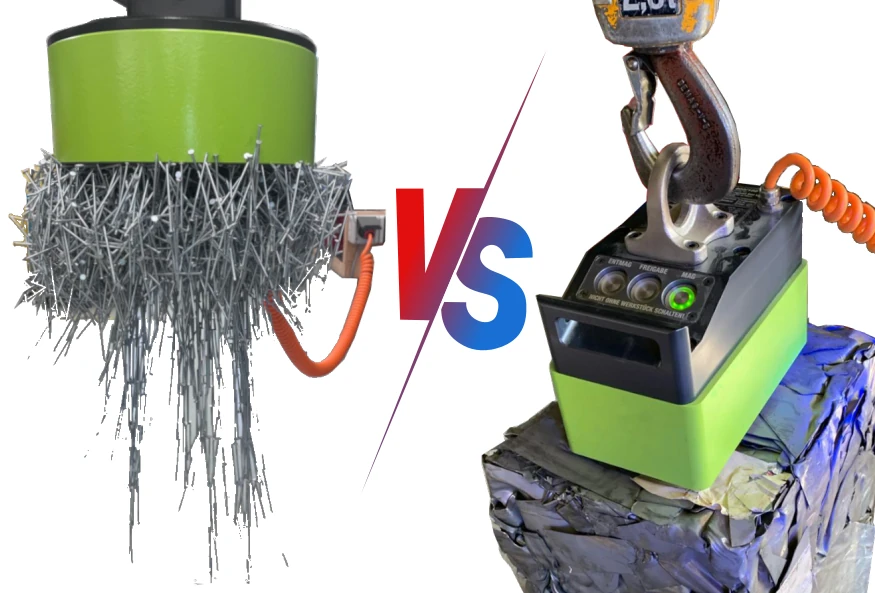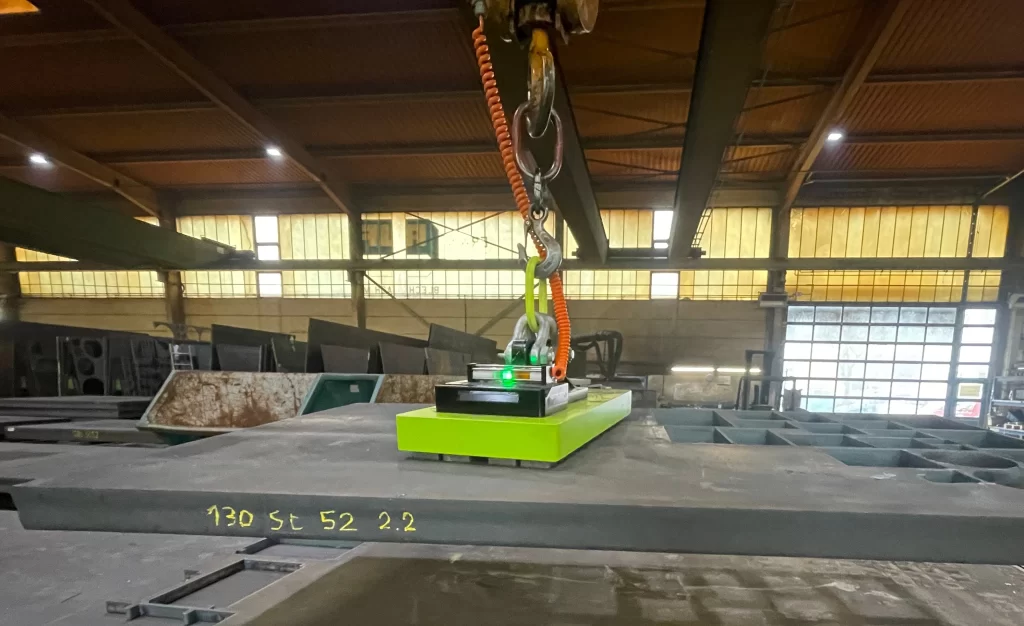Differences between electromagnets and electropermanent magnets
In the field of ferromagnetic load handling, there are various applicable systems, each specifically suited to the object being handled. A clear distinction must first be made between two completely different macro-categories: Electromagnetic systems and Electro-permanent magnetic systems
.

The differences between electromagnets and electro-permanent magnets are based on their operating method. Electro-permanent systems do not require electrical power during the working phase, only during activation—making them 100% safe during operation.
On the other hand, electromagnetic systems can work with a wide range of materials and have a more straightforward, easily understood operation. Let’s take a closer look at their specific characteristics:
Electromagnetic Systems
They use power from the electrical grid to feed the coils inside the electromagnet, which generates the required magnetic field.
The holding force can be affected by issues such as power interruptions, fluctuations, or faults in the coils or power supply. For this reason, they must be equipped with emergency batteries to ensure load retention until power is restored. These lifters are suitable for handling all types of loads, including loose materials (scrap) or bundled items, with capacities even exceeding 45 tons. They can be installed in groups on lifting beams to handle flexible loads. They are also capable of working with hot materials, up to 650°C.
Electromagnetic Beam Electromagnetic lifting systems used for the handling of sheets, billets, and rods in bundles and packs feature a circuit with deep magnetic field penetration, ideal for handling non-compact or irregularly shaped loads.
The magnets can be designed to lift one or more bundles or packs simultaneously.

Electro-Permanent Systems
These systems use the intrinsic magnetic energy of built-in permanent magnets. Magnetization or demagnetization is achieved by a brief impulse (a few seconds at most) via a coil, which reverses the polarity of one group of magnets. This either directs the magnetic flow through the load (working phase) or closes it within the magnet itself (release phase).
Once the current impulse ends, the lifter becomes completely independent from any external power source, remaining in its ON or OFF state. These lifters are ideal for handling compact loads (such as billets, slabs, single sheets, rods, cold-rolled coils, etc.), with capacities also over 45 tons.
They can be installed in groups on lifting beams for flexible loads and operate on hot materials up to 500°C.
They are INTRINSICALLY SAFE.
HD

FXE HD Electro-Permanent Magnetic System for heavy-duty loads, designed for lifting thick sheets, slabs, and raw elements
Conclusion
In conclusion, the difference between electromagnets and electro-permanent magnetic systems lies both in application and functionality!
Both systems require energization, but an electromagnet becomes demagnetized when the power supply is off, whereas an electro-permanent magnet remains magnetized even after the power is turned off.
The electro-permanent magnet is essentially a permanent magnet controlled electronically.
The system is made up of two rare-earth permanent magnetic materials, usually Neodymium and AlNiCo.
The magnetic pole direction of the AlNiCo inside the electro-permanent magnet can be switched via a current impulse to activate the system.

